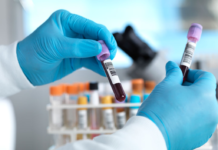To Buy Buspar Online Visit Our Pharmacy ↓

Exploring the History and Development of Buspar
In the 1960s, researchers embarked on a groundbreaking journey to develop a new class of anxiolytics that could rival the existing powerful narcs without their significant side effects. This quest led to the discovery of Buspirone, marketed as Buspar, which provided a fresh perspective on anxiety treatment. Initially, scientists conducted numerous trials to ensure its efficacy and safety, prioritizing direction set by prescriptions under strict regulatory standards. As the medication gradually evolved, it became apparent that its unique neurochemical composition set it apart. By the mid-1980s, Buspirone had successfully navigated regulatory landscapes and entered the market as a prescribed compound, promising relief from anxiety without the sedation typical of other medications of its time.
```html
| Decade | Event |
|---|---|
| 1960s | Research into new anxiolytics began |
| Mid-1980s | Buspirone entered the market as Buspar |
The Unique Neurochemical Composition of Buspar

Buspar, also known as buspirone, stands out in the world of anxiolytics due to its unique neurochemical composition, differing from the typical benzodiazepines and antidepressants. Unlike the 'happy pills' that flood the market, Buspar doesn’t act as a sedative or make the user feel 'zombified'. Instead, it’s a compound meticulously crafted to be devoid of the common sedative properties, ensuring no hangover-like side effects for the user.
Buspar is chemically distinct, operating primarily as an agonist of the serotonin 5-HT1A receptor. This receptor specificity reduces the common risk of cognitive impairment found in many anxiety treatments. While Buspar may not offer a 'stat' effect usually craved in acute anxiety situations, it provides a balanced alternative for those requiring long-term anxiety management.
Interestingly, Buspar eschews the traditional 'cocktail' approach of combining multiple medications to achieve therapeutic goals. It calmly navigates the neural landscape, targeting select neurotransmitters to moderate mood without overwhelming the system. Thus, the risk of pill burden is minimized, striking a harmonious balance between efficacy and safety.
In contrast to the more potent anxiolytics jostling for space on pharmacy shelves, Buspar’s formulation allows it to sidestep many side effects often associated with aggressive pharmacological strategies. Its singular focus on serotonin, combined with minimal dopaminergic interference, showcases its careful design intended to support patient well-being without the chaos of a pharm party atmosphere.
How Buspar Targets the Brain’s Serotonin Receptors
Buspar's effectiveness can be attributed to its preferential targeting of specific serotonin receptors, notably the 5-HT1A subtype. This interaction distinguishes it from other anxiolytics, transforming what might typically be a routine script into a more nuanced approach. Unlike broad-spectrum medications, Buspar doesn’t employ a blanket suppression method. Instead, it acts as a partial agonist at these receptors, which means it gently nudges them into activity without overwhelming them, akin to a gentle push in the right direction rather than an IV push of full-force intervention.
This unique characteristic contributes to Buspar's favorable side effect profile. Since it doesn't result in immediate stat mood alterations like other powerful compounds, Buspar provides relief with minimized risk of the common hangover side effects associated with other anxiety medications. This nuanced targeting not only desensitizes anxiety triggers but also ensures that the therapeutic intervention is precise and mindful, harmonizing well with the brain's natural chemistry.
Mechanisms That Differentiate Buspar from Other Anxiolytics

Buspar stands out in the crowded field of anxiolytics due to its unique non-sedative properties. Unlike the "Happy Pills" that often inundate pharmacies, Buspar doesn't induce the typical hangover effect because it doesn't heavily depress the central nervous system. As you pass through the Drive-Thru at Pharm Land for your Script, it's clear Buspar's action is more like a therapeutic substitution. It specifically targets serotonin receptors differently, maintaining a cleaner cognitive profile and reducing the risk of becoming a staple at Pharm Parties.
The Role of Dopamine in Buspar's Effectiveness
In understanding Buspar's impact on neurochemistry, dopamine emerges as a critical player. Unlike traditional happy pills, which predominantly target serotonin pathways, Buspar subtly balances serotonin without sparking the dopaminergic fireworks often associated with more potent narcs. The intricate dance between these neurochemicals sets Buspar apart, allowing for a smoother transition in modulating anxiety. This interaction fosters a more stabilized mood without the jittery hangover common to some serotonin-focused meds.
Interestingly, the comp nature of Buspar facilitates this balance. By not engaging in a direct assault on dopamine receptors, it avoids the pitfalls of more aggressive treatments. This unique approach encourages a calm yet alert state, enhancing overall efficacy for patients.
| Factor | Buspar | Typical Anxiolytics |
|---|---|---|
| Dopamine Interaction | Subtle Modulation | Direct Engagement |
| Side Effects | Minimal Hangover | Potential Jitteriness |
| Compound Nature | Unique Balance | Standard Approach |
Latest Research and Findings on Buspar's Efficacy
Scientific exploration of Buspar has reached fascinating milestones, offering refined insights into its efficacy. Researchers highlight Buspar's potential not just as an anxiolytic but also in its interaction with serotonin pathways, differentiating it from other compounds within the pharmacopeia. A recent "cocktail" of clinical studies confirms its effectiveness, utilizing sophisticated imaging to reveal activity patterns in the brain that suggest a complex mechanism at play.
One compelling study revealed how Buspar operates distinctly, minimizing "side effects" compared to traditional anxiolytics. Incorporating a patient-friendly "Sig"—the medication’s prescribed method—has shown improved patient compliance and better therapeutic outcomes. While some considered it amid "happy pills," evidence asserts Buspar's utility without the aggressive side effects commonly associated with such classifications.
In the landscape of psychopharmacology, Buspar's "script"—notably for anxiety without depression—remains promising. Its potential also extends to use as adjunct therapy in depression treatment. Recent peer-reviewed articles emphasize its strategic use with precise dosage titration, revealing significant improvements in patient profiles. Ongoing research directs attention to its mechanism, aiming to fully understand the nuances that make it distinct and valuable in therapeutic regimens.
A deeper dive into modern reviews unveils the utility of Buspar beyond anxiety, suggesting it effectively alleviates specific cases of depression when standard medications fall short. The synthesis of this data in clinical settings showcases Buspar's evolving role. Researchers urge more detailed inquiries, recognizing its potential as a pivotal compound in mental health treatment strategies.






























